The Washington County Coordinating Committee (WCCC) heard this week that looming budget shortfalls might impact a decades-old county transportation funding mechanism.
At Tuesday’s WCCC session, Stephen Roberts, Washington County Director of Land Use & Transportation, reported that county “transportation and other community needs continue to exceed available funding.”
The WCCC advises the county Board of Commissioners on regional transportation and land use planning, and is composed of elected representatives from cities in the county and the county itself. One of its roles is to recommend MSTIP (Major Streets Transportation Improvement Program) projects to the Board of Commissioners.
MSTIP is a funding mechanism unique to Washington County and has a five-year funding cycle. Area transportation departments have submitted 25 projects for consideration for the current 2023-28 round. Understanding MSTIP’s history helps to explain the present funding conundrum. It began as a voter-approved capital levy, but in response to the 1997 tax revolt Measure 50 Washington County rolled the levy into their permanent property tax, with the consequence that money targeted for transportation is placed in the general fund.
There has been a good faith agreement between the cities and county that this money would be transferred yearly from the general fund to MSTIP. With this year’s budget gap, however, the Commissioners have been advised to develop “strategies for mitigating a potential FY 2023-24 General Fund transfer reduction and project cost escalation.” In other words, Washington County needs some of that money, which in past years would have gone to MSTIP, to close other budget gaps.
MSTIP has funded 150 miles of bike lanes and sidewalks, and more than 150 projects totaling $900 million since 1986. This year, Tigard, Beaverton, Hillsboro have projects under consideration for for 2023-2028 MSTIP funding. For example, Tigard’s Greenburg Rd complete street rebuild, which BikePortland reported about last fall.
But projects approved in the two previous MSTIP funding cycles, 2012 (3d) and 2016 (3e), are also putting pressure on transportation funding. Because of cost-escalation, it is anticipated that the county will be obliged to cover an additional $70M to complete the remaining projects.
One of those projects, the SW Multnomah Blvd / Garden Home Road Intersection Safety Project has $1 million in MSTIP funding and $1.2 million from Portland System Development charges allocated to it. But the project, which is managed by the Portland Bureau of Transportation, has languished in the design phase for years, and was “put on hold until more funding can be secured.” Now that MSTIP funding is also up in the air, the project shortfall on the Portland end might offer a convenient way of postponing the project indefinitely.
This year, MSTIP was forecast to provide $140 million, to be divided evenly among the four Washington County districts, making $35 million per district. There is still much uncertainty and, depending on how much money Washington County Board of Commissioners decides not to transfer out of its general fund to MSTIP, capital transportation funding could be facing very lean times.
Roberts recommended that “it is timely now to invest a relatively small amount of funding to begin project development for several new projects while continuing to deliver previously committed 3d, 3e and Bonding Cost-sharing projects.” And he emphasized that the funding issues were of both short- and long-term concern.
In March, the county will have work session briefings on MSTIP and the Capital Improvement Plan. Roberts said that policy decisions will need to be made and that “equity focus and community engagement are key for prioritizing the allocation of limited funding.”



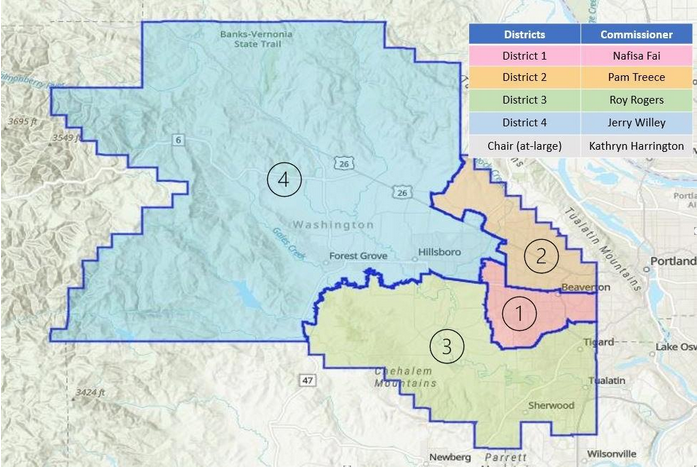
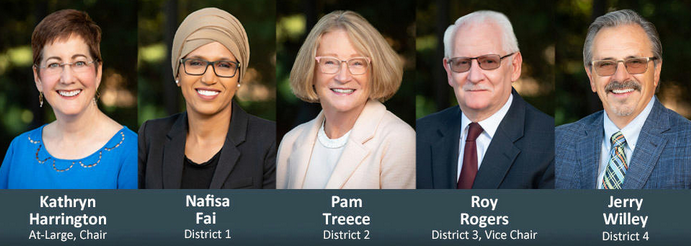

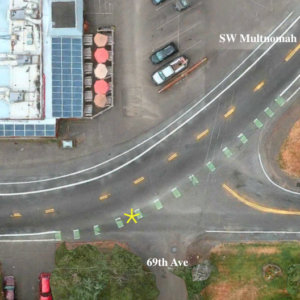
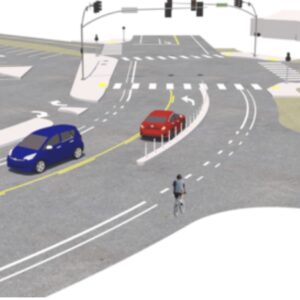
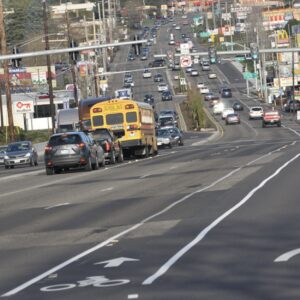
Thanks for reading.
BikePortland has served this community with independent community journalism since 2005. We rely on subscriptions from readers like you to survive. Your financial support is vital in keeping this valuable resource alive and well.
Please subscribe today to strengthen and expand our work.
Participate in your CPO https://washco.maps.arcgis.com/apps/PublicInformation/index.html?appid=41265975a7ad4dde8dd1f8a7143cf761 and get involved. There are plenty of advocates who are now raising these concerns to their representatives
MSTIP is why Washington County has the widest roads in the region (combined with being the newest area which comes w/ the latest planning ideologies that encourage asphalt).
I don’t understand why voters keep re-upping this fee that is clearly making their neighborhoods worse. If they want to fund the kinds of investments that would make neighborhoods better like making new connections between cul-de-sacs for biking and walking and more ‘neighborhood greenway’ style routes through neighborhoods instead of all biking routes being on major streets then they need to rewrite the language behind how their tax polices work.
They tend to use MSTIP as the local match for federal grants and then use the money to widen every road beyond anyone’s wildest dreams.
Glad I don’t have to commute out there at the moment, it has allowed me to forget about this debacle
Lisa has a good summary about this in the article. MSTIP was a levy established by popular vote, but is now part of the permanent property tax assessment. It doesn’t expire like a bond or levy, and doesn’t need voter approval to be ‘re-uped’. It’s not clear if the county rolled it into the property tax to get a higher baseline rate before the ballot measure limits, or if it was put put there as a way to shield it from ballot measure limits on levies. In either case, it’s not something the county has to ask voters to reapprove.
Silver lining…west-side residents can point at MSTIP whenever someone brings out that tired argument that cyclists don’t pay for the roads!
I’m actually okay with the delay to the Multnomah Blvd / Garden Home project, which will introduce yet another signalized intersection, where everyone will have to stop and wait wait wait. It really should have a roundabout, like the new one down by Allen and Scholls Ferry. Everyone just needs to be super careful when cycling east on Multnomah and make sure no car turning right onto / going straight on Garden Home right-hooks you. A simple fix there would be to bend Garden Home so it meets Multnomah at a right angle, and put a MUP going straight onto Garden Home east. But I’m sure they won’t spend a few thousand when they can spend a million or more on a bigger project.
The roundabout on 92nd Ave rattled a house foundation, took out trees, and the 30 mph speed limit sign hasn’t been reinstalled. That was an unnecessary project considering the Fanno Creek Trail wasn’t put, but should have been, on the south side of Allen Boulevard. 92nd isn’t a major freight route especially considering it has an old wooden bridge over Fanno Creek.
Then why did WashCo add more car lanes to Bethany Blvd, Brookwood in Hillsboro, and punch through SW 124th Ave street in the farm land? Reality check.
Additional lanes were added because the daily traffic volume was approaching the maximum limit this road could handle.
This is kind of like saying subdivision developers have funded hundreds of wetland enhancement projects.
As others have observed, MSTIP is a program that builds and widens roads. Many of the arterial roads on the west side that are 5-lanes wide, have a 40 MPH+ posted speed, and unprotected bike lanes were MSTIP projects (but they do have that extra 2′ painted buffer…).
These projects do a great job of undermining cycling in the minds of those that plan, build, and maintain the roads. New roads with bike lanes get built, very few people ride them because they are awful high-stress environments, and the perception that “people out here don’t bike very much” gets ingrained just in time for the next round of projects. It doesn’t help that the carbon and lycra set are the most visible users on these roads. That becomes a narrative that the bike facilities only get used for recreation, which further reduces the importance of providing cycling infrastructure.
There is an ideology that they need to build roads for cars because most people drive cars. That’s true based on current mode shares, but there is no recognition that continuing to build 100s of miles of new and expanded lanes only furthers that auto-dependent death spiral. What does the county look like after another 10, 20, or 30 years? Does every major intersection in the county eventually look like this?
It’s telling that the article about the cycle track on Jackson School Road had a quote from Hillsboro staff that ‘the nature of the bike solution has evolved’. Solution? What exactly is the problem? The problem is that the primary objective is building roads for cars, and bikes cause turn conflicts and slow down traffic. I guess we should count ourselves fortunate to be living in a time with such a highly-evolved solution for getting bikes out of the way.
It’s not so much that leaders and staff on the west side are anti-bike but rather that they are so pro-car. No one on the WCCC wants to tell their constituents that they can’t have the nice new 5 lane road like that other city got last year. It’s tough to push for transportation reform in a place that names a new arterial road on the edge of the UGB after an active County Commissioner.
This reminds me of how, in the 11th hour, the relatively low-cost high-impact pedestrian facilities get slashed from a bridge because they’re “trying to cut costs”. It’s an error of prioritization, not of budgeting.